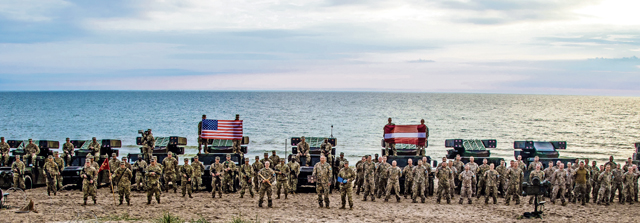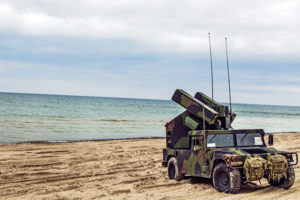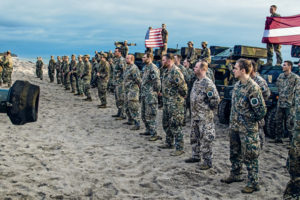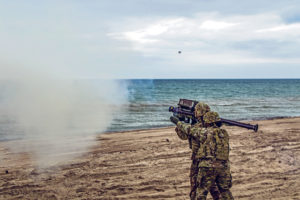
JURMALCIEMS, Latvia — U.S. Soldiers assigned to 5th Battalion, 4th Air Defense Artillery Regiment, 10th Army Air and Missile Defense Command, participated in a joint multinational training exercise with NATO allies Latvia and Lithuania from June 7-10, in Jurmalciems, Latvia.
The exercise, Tobruq Arrows, is the combined live fire iteration of Tobruq Legacy 20, which is scheduled to take place in September. This is also the first air defense live fire hosted in Latvia as part of the Tobruq Legacy series.
“This all leads to a higher level of readiness for the alliance,” said Brig. Gen. Greg Brady, Commanding General of 10th AAMDC. “With maintaining that readiness, we can maintain our overmatch but just as importantly, we can improve all of our capabilities together.”

For Soldiers to participate in Tobruq Arrows, in-depth planning and preparation was required. The risks associated with COVID-19 were taken into consideration throughout the planning process.
“Usually for an exercise like this, our Soldiers would train for about a month”, said 1st Sgt. Bryan Norris, first sergeant of C Battery, 5-4 ADAR. “With the presence of ‘COVID’ we’ve had to change things up and put additional measures in place.”
In addition to training variations, all Soldiers were required to conduct a 14-day restriction of movement and COVID-19 testing prior to traveling to Latvia. Additional precautions were taken during the travel and participation of the exercise.

“We had a couple of extra buses secured to make sure we were able to do more physical distancing en route to the site,” said Maj. Matthew Westhoff, command surgeon of 10th AAMDC. “As we’re here, we continue to use face masks when the mission requires having to work closely as well as continuing to practice good hygiene.”
During the exercise Latvian, Lithuanian and U.S. troops participated in a diverse range of training scenarios, which allowed them to routinely fire their service — specific air defending artillery.
The battalion displayed the capabilities of their Avenger system, along with its 50-caliber machine gun and FIM-92 Stinger Man Portable Air Defense System. These weapon systems are designed to engage aerial targets and are some of the U.S. Army’s best short-range air defense assets.

Communication is another essential part of any joint defensive movement. Latvian and U.S. Soldiers practiced integrating signal and communication assets. This enabled the NATO teams in Latvia and Germany to track everything that happened during the exercise.
“Our equipment, along with the Latvian radar, is providing an air picture of this range back to our command team,” said Chief Warrant Officer 3 Jarrad Chamberlin, C-2 systems integrator for 5-4 ADAR. “From there, we’re sending that air picture via satellite back to Germany. This has never been done before.”
With the successful completion of this exercise, the NATO Allies proudly displayed their ability to perform despite COVID-19 or any other obstacle that may present itself.
“With the discipline of this battalion, we were able to mitigate the risk of COVID-19 and maintain a high level of readiness,” Brady said. “Maintaining air missile and defense readiness is critical.”


